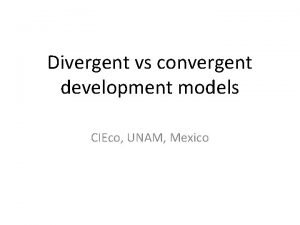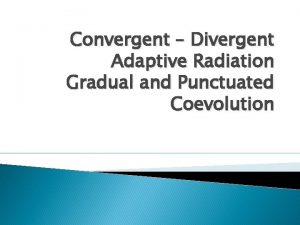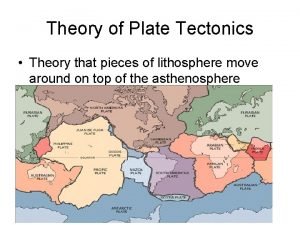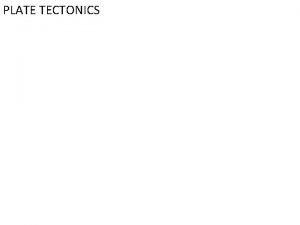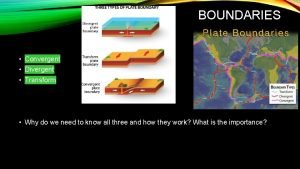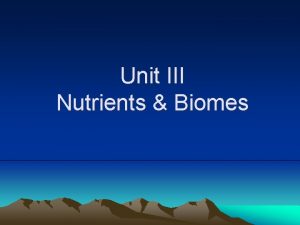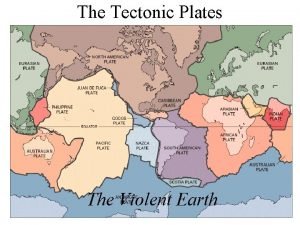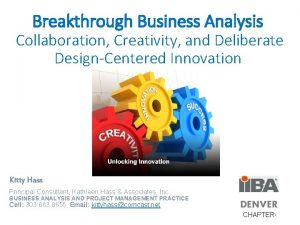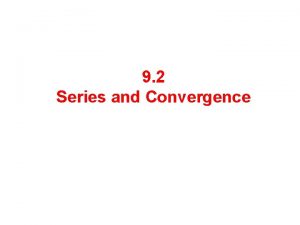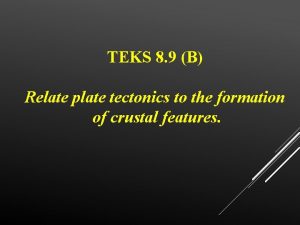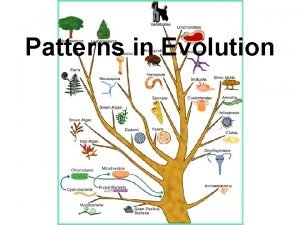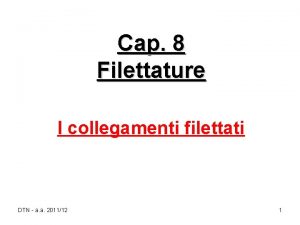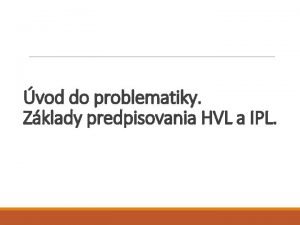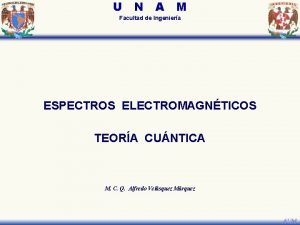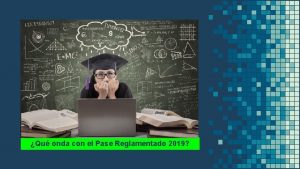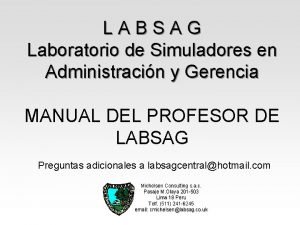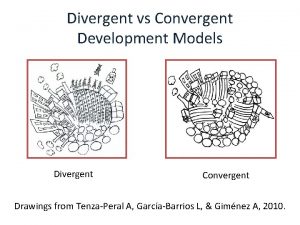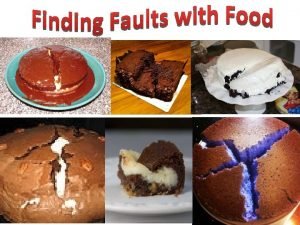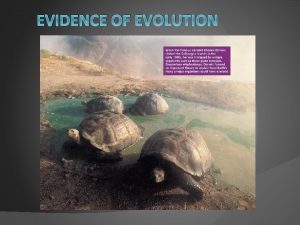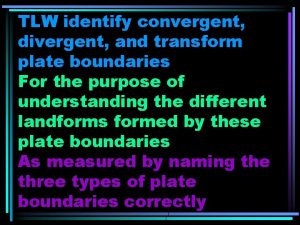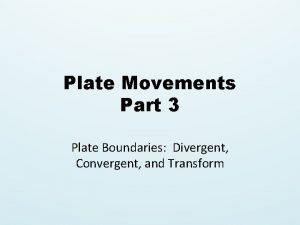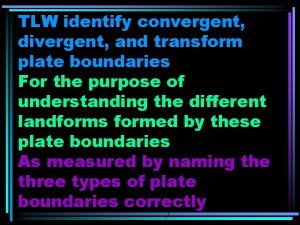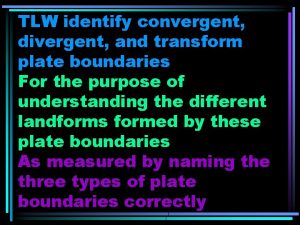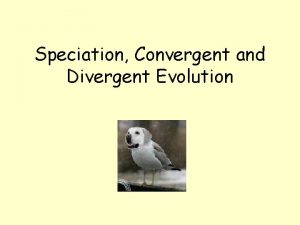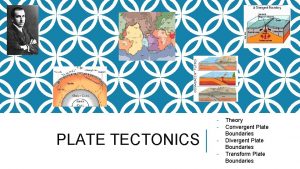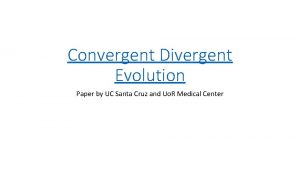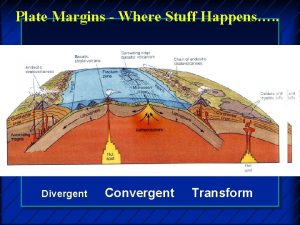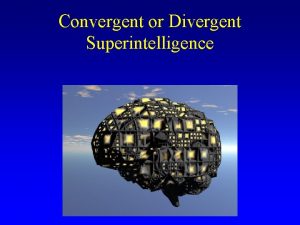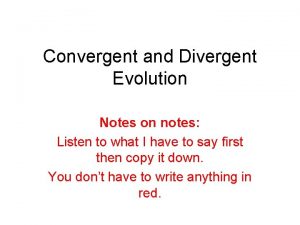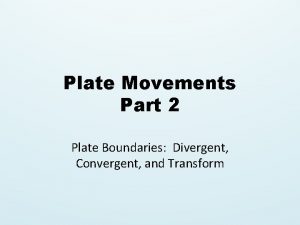Divergent vs convergent development models CIEco UNAM Mexico























- Slides: 23

Divergent vs convergent development models CIEco, UNAM, Mexico

Global agriculture • Global food production is increasing→ undermine the well-being of communities in many ways. Agriculture must be transformed • To feed the projected global population by 2050, more than 1 billion ha of wild land will need to be converted to farmland if current approaches continue to be used • Historically, agricultural strategies have been assessed on the basis of a narrow range of criteria, such as profitability or yields A modificarse después de que Martín lea el libro de la FAO

Forests an deforestation in Mexico • With the explosive expansion of forestal plantations the last decades, entire ecosystems have been interrupted and destroyed attempting against biodiversity and survival of animal and vegetal species causing as well damages to quality of life in the inhabitants. • One fourth of the area in Mexico is occupied by forests • Each year, 600 tousand hectares of temperate and tropical forests are lost Deforestation is a problem increasing • Mexico is in the first places of biodiversity, but also of deforestation

Forest Transition Model • Tries to incorpore 3 involved sectors : non-government, industrial , agriculture (formed by little and medium producers who make reforestation have better economical results than the traditional agriculture or cattle have (with volatile prices) It is indispensable that consumers contribute to forest reccuperation It is necessary to work in favor of forestal plantations because a traditional activity in Mexico has been forest extraction (sustainable) principally in temperate forests.

Changing FTM paradigm • Forest Transition Model forces to: – Spatial concentration and intensification of agricultural production – Exodus of the rural population to industrializing urban centers – Reduce the demand for cropland, – Freeing marginal farmlands and leading to recovery of forests Perfecto & Vandermeer 2010

Quality Matrix Model • Recquires conserved ecosystems • Long-time process • Permites connectivity between conserved fragments (one species at a time) • Challenges – Identify agroecological systems in a local way – How to define boundaries in subsystems • Consideraciones determinantes de la biodiversidad: – Metapopulations – Metacommunities

Changing divergent or converging development models?

…Changing FTM paradigm Considering universal and system specific scales: Sachs, J. et al. Nature 466, 558 -560 (2010)

Mexico and the FT model Industrialization, urbanization, rural agriculture and migration • 1945 - 1970. Agriculture for exportation in quality lands, few subsidies for agriculture in marginal areas. • 1970. Crisis. 1980. Neoliberal politics. Decreasing industry, poverty, unnemployment in rural and urban zones, grain importation from U. S. A. , land privatization. • 1994. Politic and economic support for industrial agriculture displacing smallscale farmers and self-sufficence. > migration to U. S. A. Remittances • Consequences from lack of support for small-scale farmers a) Abandonment of conservation practices for soil and fire control b) Increasing use of herbicide Releer García-Barrios et al. 2009 para c) Remittances from U. S. A. for cattle and grass fundamentar o traducir correctamente d) Land for major producers (e. g. industries) García-Barrios et al. Bioscience 59 (10), 863 -873

…Mexico and the FT model • Adjustments in rural areas have not diminished deforestation • Energy, food and other goods obtained from forests are increasing • From 16 cases in Mexico, 15 are not consistent with the FTM Model not universally applicable • Land abandonment is only an option, generally cattle and grass expantion domain

Modelo de Transición Forestal en México • Factors involved: • Weakness in local and rural institutions forests exploitation • Priority of support for intensive agriculture and displacement of small-scale farmers • Mexico is not consistent with the FTM García-Barrios et al. , 2009

Questions • Why Mexico does not follow the FT model? • Is there examples of Matrix Quality Model? • Agriculture, land-sparing and challenges for conservation • Or/and • Does your country/place follow the FT model with the current socioeconomic system? • Do you have examples of MQM? Diapositiva sustituirse con datos mundiales (El estado mundial de la agricultura y la alimentación, FAO 2009)

QMM and challenges for conservation • Strategy of protected areas alone • Phenomenon like climate change could drive species out of reserves • Integrate agriculture

Example of agroforestry

Coffee plantation and biodiversity conservation Fig 2. Priority areas for conservation (CONABIO) and coffee lands

Shade coffee plantations as refugees for threatened fauna and flora from deforestation. Provide important environmental services.


Shade coffee plantations or productive gardens? One hectare of shade coffee plantation shelters between 40 and 140 spp of usable plants (for family, locally, and national and international commerce).

Implications, limits, challenges and questions for QMM

Implications • The Quality Matrix Model recquires conserved ecosystems, so, for disturbed ecosystems there are necessary ecological restauration

Limits • What is the criterion for defining the quality matrix considering the favoured species? (en función de los grupos de especies que se ven favorecidos) • How to achieve QMM be feasible with the pressures of: – Free market economy (e. g. overproduction -> fall in prices > intentional waste) – Neoliberal politics (e. g. priority for economic development and promotion for productivity; economic subsidies for intensive productive activities that damage ecosystems); – Contradictory managment actions (acciones de gestión) (e. g. payment for environmental services and for extensive cattle farming at the same time)

Challenges • To identify productive and biodiverse agroecologic systems for local contexts • Scientific research – Recovery and recognition of traditional knowledge • Monitoring and research on different taxonomic groups responding to an agroecological matrix considered of high quality • Management (Gestión) and regulation of agroecologic production systems to conciliate conservation and use • Socio-cultural resistences in transition through an alternative productive system: How can be attractive this transition ? • What negotiation (gesión) and education actions would be needed, who would do them and who would be directed to? • Equity in land distribution, dissolving monopolies and giving them to small-scale farmers • To include quality of life as fundamental axe in every transition • We need to know the local ecological, social, historical and cultural conditions to implement this matrix • The QMM will support the food demand for the population in the future? • Will humans be tolerant with other species in the matrix?

Questions • What is the viability of this proposal considering the important power of big corporations producing and managing food and sources? • According to the QMM, does urban zones change? How they change? The urban population who works in small-scale farms will be a simple receiver of sustainable products made in rural zones? • How can the society influence for and create a legal frame promoving more equitative conditions in the transition to sustainability? • How to promove participation in all the society sectors and what are the ways to do it?
 Recquires
Recquires Site:slidetodoc.com
Site:slidetodoc.com Convergent divergent transform
Convergent divergent transform Divergent convergent coevolution
Divergent convergent coevolution Convergent boundary divergent boundary transform boundary
Convergent boundary divergent boundary transform boundary Continental drift vs plate tectonics theory
Continental drift vs plate tectonics theory Tectonic plates move
Tectonic plates move Convergent divergent transform
Convergent divergent transform Divergent or convergent
Divergent or convergent San andreas fault map
San andreas fault map Igninn
Igninn Test convergence of series
Test convergence of series East african rift valley plate boundary type
East african rift valley plate boundary type Diverging evolution
Diverging evolution Dmz vicolo cieco
Dmz vicolo cieco Rappresentazione filettature
Rappresentazione filettature Intestino crasso cieco
Intestino crasso cieco Dmz vicolo cieco
Dmz vicolo cieco What is the difference between models and semi models
What is the difference between models and semi models Exp orig
Exp orig Espectro del arcoiris
Espectro del arcoiris Ondas electromagneticas unam
Ondas electromagneticas unam Que onda con el pase reglamentado 2020
Que onda con el pase reglamentado 2020 Labsag ingresar
Labsag ingresar
